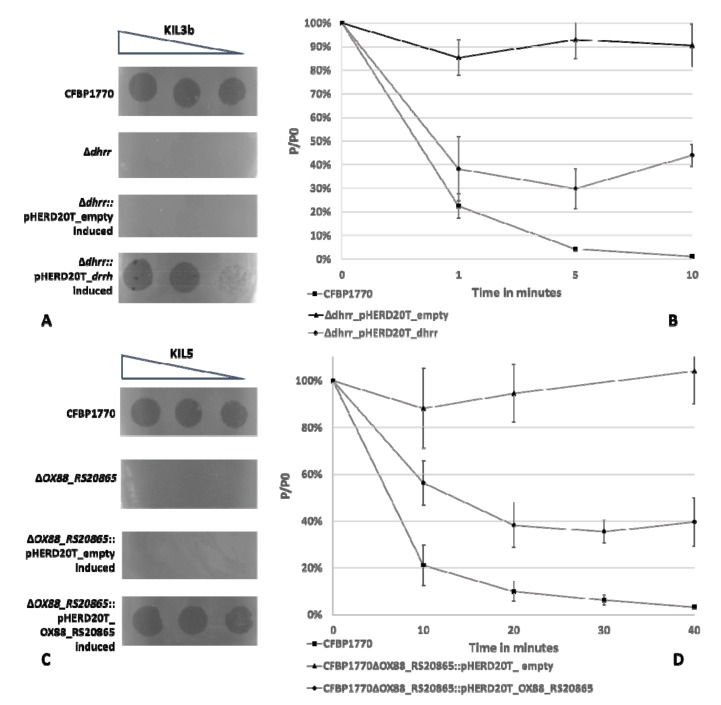Figure 1.
Complementation assay to test the effect of different genes on phage infection and adsorption. (A) Spot assay of KIL3b (108, 107 and 106 PFU/mL) on a lawn of Pseudomonas syringae pv. porri (Pspo) CFBP 1770, CFBP 1770 Δdhrr, CFBP 1770 Δdhrr::pHERD20T_empty (induced) and CFBP 1770 Δdhrr::pHERD20T_dhrr (induced), respectively. Expression of dTDP-4-dehydrorhamnose reductase (Dhrr) indeed restores phage infection. (B) Adsorption assay of KIL3b on CFBP 1770 (square), CFBP 1770 Δdhrr::pHERD20T_empty (induced) (triangle) and CFBP 1770 Δdhrr::pHERD20T_dhrr (induced) (diamond) in which the percentage of non-adsorbed phages is plotted as a function of time. When Dhrr expression is restored, phages are able to adsorb to their host, confirming that this protein is involved in phage adsorption. (C) Spot assay of KIL5 (108, 107 and 106 PFU/mL) on a lawn of CFBP 1770, CFBP 1770 ΔOX88_RS20865, CFBP 1770 ΔOX88_RS20865::pHERD20T_empty (induced) and CFBP 1770 ΔOX88_RS20865::pHERD20T_ OX88_RS20865 (induced); also in this case, phage infection can be restored by introducing OX88_RS20865. (D) Adsorption assay of KIL5 on CFBP 1770 (square), CFBP 1770 ΔOX88_RS20865::pHERD20T_empty (induced) (triangle) and CFBP 1770 ΔOX88_RS20865::pHERD20T_OX88_RS20865 (induced) (diamond). By overexpressing OX88_RS20865, phage adsorption to the host can partially be restored, indicating that this protein plays a role in the adsorption phase of KIL5.

